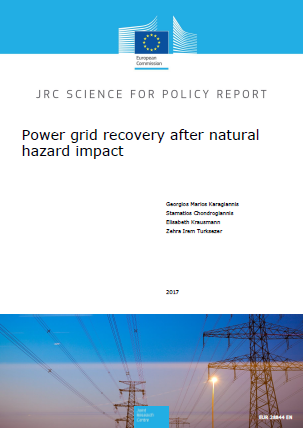
This study analyses the performance of the power grid during 16 earthquakes, 15 space weather events and 20 floods. It concludes that different natural hazards affect the power grid in different ways. Earthquakes cause inertial damage to heavy equipment and brittle items, and ground failure and soil liquefaction can be devastating to electric infrastructure assets. Recovery time is driven by the balance of repairs and capabilities. Poor access to damaged facilities, due to landslides or traffic congestion, can also delay repairs. In this study, recovery time ranged from a few hours to months, but more frequently from 1 to 4 days. Floods are commonly associated with power outages. Erosion due to the floodwaters and landslides triggered by floods undermine the foundations of transmission towers. Serious, and often explosive, damage may occur when electrified equipment comes in contact with water, while moisture and dirt intrusion require time-consuming repairs of inundated equipment. Recovery time was driven by the number of needed repairs, and site access, as repairs cannot start until floodwaters have receded. In this study, power was back online from 24 hours up to 3 weeks after the flood. However, longer recovery times (up to 5 weeks) were associated with floods spawned by hurricanes and storms. Space weather affects transmission and generation equipment through geomagnetically induced currents (GICs). In contrast to earthquakes and floods, GICs have the potential to impact the entire transmission network. Delayed effects and the potential for system-wide impact were the main drivers of recovery time in this study. When damage is limited to tripping of protective devices, restoration time is less than 24 hours. However, repairs of damaged equipment may take up to several months. The study concludes with a number of recommendations related to policy, hazard mitigation and emergency management to reduce the risks of natural hazards to electric infrastructure and to improve crisis management in the aftermath of a natural disaster.
